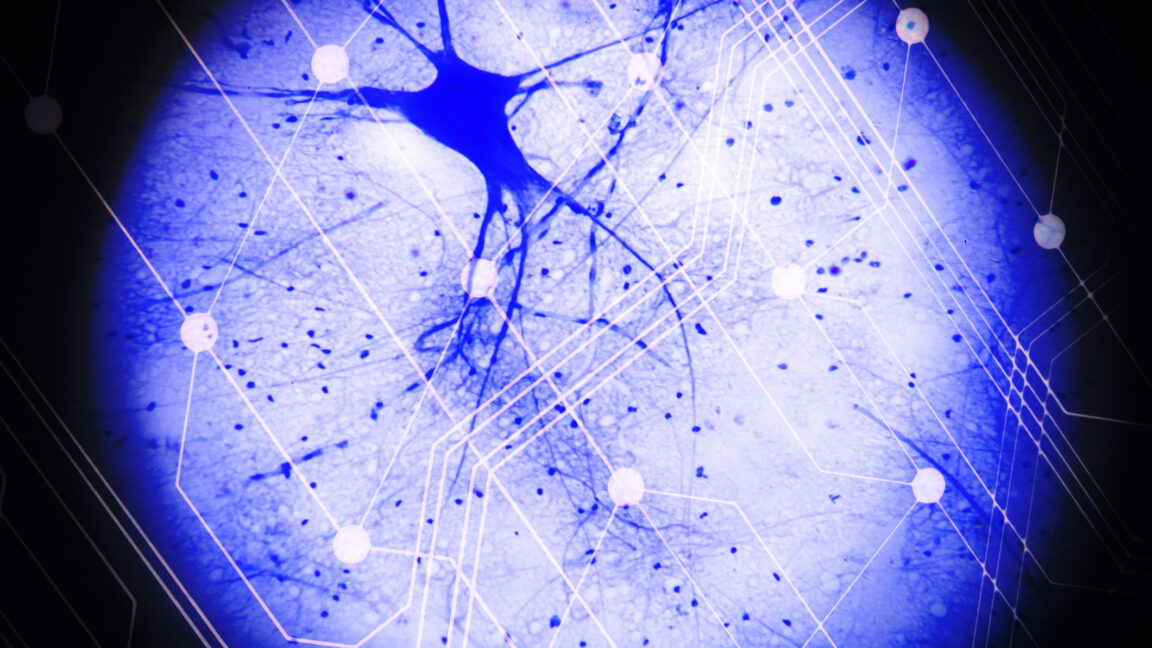
Researchers get spiking neural behavior out of a pair of transistors
arstechnica.com
Spiking silicon Researchers get spiking neural behavior out of a pair of transistors New approach to improving AI performance turns a silicon problem into a feature. John Timmer Mar 27, 2025 11:32 am | 4 Credit: jxfzsy Credit: jxfzsy Story textSizeSmallStandardLargeWidth *StandardWideLinksStandardOrange* Subscribers only Learn moreThe growing energy use of AI has gotten a lot of people working on ways to make it less power hungry. One option is to develop processors that are a better match to the sort of computational needs of neural networks, which require many trips to memory and a lot of communication between artificial neurons that might not necessarily reside on the same processor. Termed "neuromorphic" processors, this alternative approach to hardware tends to have lots of small, dedicated processing units with their own memory and an extensive internal network connecting them.Examples like Intel's Loihi chips tend to get competitive performance out of far lower clock speeds and energy use, but they require a lot of silicon to do so. Other options give up on silicon entirely and perform the relevant computation in a form of phase change memory.A paper published in Nature on Wednesday describes a way to get plain-old silicon transistors to behave a lot like an actual neuron. And unlike the dedicated processors made so far, it only requires two transistors to do so.Punching throughThe new work was done by a collaboration between researchers in Saudi Arabia and Singapore. Their goal was to simplify the basic requirements for neuromorphic computing down from the sorts of things being done by Intel, while at the same time keeping it compatible with existing silicon technology. To do so, they relied on a phenomenon that's typically considered a problem during the operation of normal silicon processors.Specifically, the researchers operate a transistor under what are called "punch-through conditions." This happens when charges build up in a semiconductor in a way that can allow bursts of current to cross through the transistor even when it's in the off state. Normally, this is considered a problem, so processors are made so that this doesn't occur. But the researchers recognized that a punch-through event would look a lot like the spike of a neuron's activity.The team found that, when set up to operate on the verge of punch-through mode, it was possible to use the gate voltage to control the charge build-up in the silicon, either shutting the device down or enabling the spikes of activity that mimic neurons. Adjustments to this voltage could allow different frequencies of spiking. Those adjustments could be made using spikes as well, essentially allowing spiking activity to adjust the weights of different inputs.With the basic concept working, the team figured out how to operate the hardware in two modes. In one of them, it acts like an artificial synapse, capable of being set into any of six (and potentially more) weights, meaning the potency of the signals it passes on to the artificial neurons in the next layer of a neural network. These weights are a key feature of neural networks like large language models.But when combined with a second transistor to help modulate its behavior, it was possible to have the transistor act like a neuron, integrating inputs in a way that influenced the frequency of the spikes it sends on to other artificial neurons. The spiking frequency could range in intensity by as much as a factor of 1,000. And the behavior was stable for over 10 million clock cycles.All of this simply required standard transistors made with CMOS processes, so this is something that could potentially be put into practice fairly quickly.Pros and consSo what advantages does this have? It only requires two transistors, meaning it's possible to put a lot of these devices on a single chip. "From the synaptic perspective," the researchers argue, "a single device could, in principle, replace static random access memory (a volatile memory cell comprising at least six transistors) in binarized weight neural networks, or embedded Flash in multilevel synaptic arrays, with the immediate advantage of a significant area and cost reduction per bit."That also has obvious consequences for energy use, since you'll need to use far less hardware to get very high counts of artificial neurons. The authors estimate that the energy requirements are similar to some of the implementations that rely on memristors, which don't require any energy to be maintained.That said, things aren't quite as simple as "you only need two transistors." A chip that relies on these devices will also need hardware that controls their state and potentially resets it quite often. While a stability of 10 million clock cycles sounds good, a lot of current hardware operates at speeds that mean this would lose state multiple times a second. (Although, to be fair, neuromorphic processors tend to run at far lower clock speeds.) There's also the issue of communications; the spikes have to be sent somewhere to matter, so any chip based on this system would need to keep track of where and have access to a communication mesh that would get the spikes there.The other issue is the fact that these work via spiking rather than simply sending on some sort of numerical output. It's possible to get pretty much any neural network to run as a spiking neural network, but there are some significant challenges, like converting the input into a series of spikes in the first place. Performance isn't always as good as you'd get from a non-spiking network in every use case, as well.Still, given the fact that the energy use of AI is putting us at greater risk of blowing past all of our climate targets, it's probably a good thing to have as many options as we can get to cut down on the energetic cost.Nature, 2025. DOI: 10.1038/s41586-025-08742-4 (About DOIs).John TimmerSenior Science EditorJohn TimmerSenior Science Editor John is Ars Technica's science editor. He has a Bachelor of Arts in Biochemistry from Columbia University, and a Ph.D. in Molecular and Cell Biology from the University of California, Berkeley. When physically separated from his keyboard, he tends to seek out a bicycle, or a scenic location for communing with his hiking boots. 4 Comments
0 Commenti
·0 condivisioni
·79 Views









